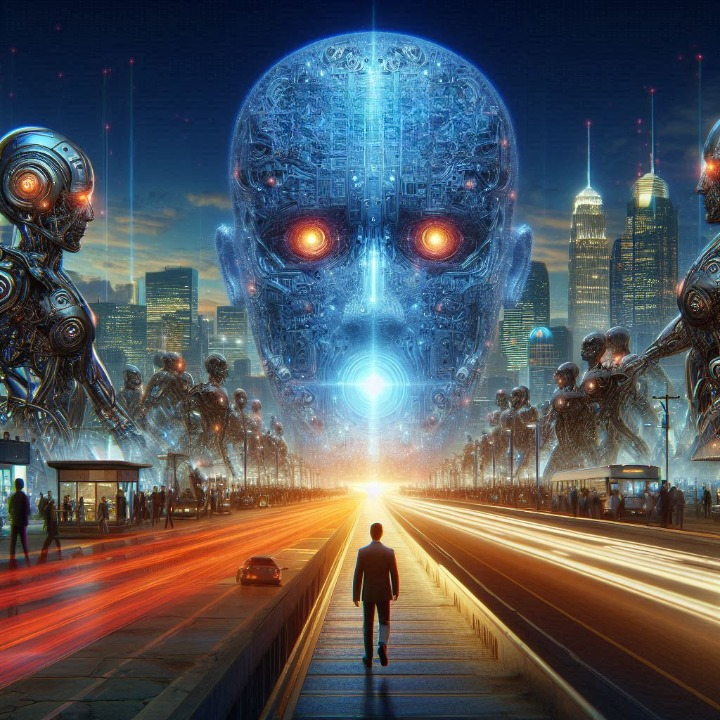5 Key Takeaways
- Winner-Take-All Economics: The AI market exhibits “winner-takes-all” dynamics, making extreme compensation packages rational for companies competing for technological supremacy
- Individual ROI Over Acquisitions: Nine-figure recruiting packages for pivotal individuals may be cheaper than multi-billion-dollar “acquihire” deals, making them potentially a “bargain” for Big Tech budgets
- Cultural Warfare: Counter-offers can be strategic weapons, forcing rivals to raise compensation and potentially disrupting team dynamics at competing companies
- Retention Challenges: Despite offering $2M+ yearly salaries, Meta struggles with retention as AI talent continues flowing to rivals like OpenAI and Anthropic
- Mission vs. Money: Culture and mission alignment remain crucial factors, with some companies maintaining higher retention rates despite lower compensation by focusing on “the actual mission of creating AGI”
The artificial intelligence industry has entered an unprecedented talent arms race, with compensation packages reaching levels previously reserved for professional athletes and Hollywood superstars. When Meta reportedly offered OpenAI researchers up to $100 million in signing bonuses, it sparked a heated debate about whether such extreme measures represent sound business strategy or market madness.

The Great AI Talent Gold Rush
The scope of this talent war is staggering. Meta has sought to hire “a lot of people” from OpenAI with “giant offers” including “$100 million signing bonuses” according to OpenAI CEO Sam Altman. While Meta executives have disputed the exact structure of these offers, noting that “a four-year total pay package worth about $100 million for a very senior leader is not inconceivable for Meta”.
The battle extends beyond just Meta and OpenAI. Companies are offering “more than $2 million in retention bonuses and equity packages exceeding $20 million to deter defections” as the entire industry scrambles to secure top AI talent.
The “Crazy” vs. “Bargain” Debate
Sam Altman’s “Crazy” Perspective
OpenAI’s CEO has been vocal in his criticism of Meta’s approach. Altman argues that his company has built “a culture that is good at repeatable innovation” and expressed skepticism about whether massive financial incentives alone can create sustainable innovation or healthy workplace culture.
His confidence appears backed by results – Altman stated that none of OpenAI’s “best people have decided to take them up on that,” implying strong retention reflects a workplace built on mission and purpose beyond just compensation.
The Strategic “Bargain” Argument
However, Laszlo Bock, Google’s former VP of HR, offers a compelling counterargument. Bock believes these extreme offers make business sense because of the return on investment Meta could get, and because of the potential harm denying talent could do to rivals.
His reasoning is grounded in comparative economics: “Strategically, not only is it rational, it’s cheaper than the deals that have been done with Character AI or Scale AI. If you can pick off the individuals for $100 million each and they’re good, it’s actually a bargain”.
The numbers support this perspective. Meta reported $164.5 billion in revenue last year, making nine-figure packages a “rounding error” for the largest tech companies. When compared to Meta’s recent $14.3 billion investment in Scale AI or Google’s $2.7 billion licensing deal with Character.AI, individual talent acquisition appears relatively cost-effective.

The Hidden Strategy: Weaponizing Counter-Offers
Perhaps most intriguingly, Bock reveals how sophisticated companies use the talent war as a strategic weapon. At Google, they had processes to get a “multimillion-dollar counter-offer” in the hands of employees within “60 minutes” of them saying they had an offer from a rival.
This isn’t just defensive – it’s offensive warfare. Google would counter-offer to force the poaching company to raise its offer, with the goal of sending those employees to rivals with bigger salaries to throw off team dynamics and disrupt the other company’s culture. The strategy exploits human psychology: if a “mediocre” person joined a competitor earning much more than their new colleagues, it could cause “tremendous internal tension”.
The Reality Check: Money Doesn’t Guarantee Loyalty
Despite the astronomical offers, results are mixed. Meta is “currently offering $2M+/yr in offers for AI talent and still losing them to OpenAI and Anthropic”, suggesting that compensation alone isn’t sufficient for talent retention.
OpenAI’s residents earn an annualised salary of $210,000 – significantly less than Meta’s offers – yet maintain higher retention rates. This suggests that being “obsessed with the actual mission of creating AGI” provides a competitive advantage beyond pure compensation.
Strategic Implications for Digital Companies
1. Talent as Infrastructure Investment
For digital companies, the AI talent war demonstrates that human capital should be viewed as critical infrastructure. In winner-takes-all markets, attracting or denying top talent to rivals can have outsize consequences on product leadership, innovation, and eventual market dominance.
2. Culture as Competitive Moat
The retention challenges faced by high-paying companies highlight culture’s strategic importance. Organisations that can articulate compelling missions and create environments for breakthrough innovation may outcompete purely financially motivated offers.
3. Strategic Poaching vs. Defensive Retention
Companies should develop sophisticated approaches to both offensive talent acquisition and defensive retention. The strategic use of counter-offers can serve dual purposes: retaining talent while potentially disrupting competitors.
4. Alternative Talent Development
OpenAI is “betting millions on building AI talent from the ground up” rather than only competing in the external market. This approach of developing internal talent pipelines may provide more sustainable competitive advantages.

The Broader Market Context
This talent war reflects broader dynamics in the AI industry. For contrast, typical engineer’s salaries at OpenAI are in the $100,000 range, making the $100 million packages represent a 1000x premium for the most elite talent. This extreme variance suggests the market recognizes that individual contributors can have outsized impact in AI development.
The Ultimate Irony: Building Your Own Replacement
One compelling perspective on these astronomical compensation packages involves a fascinating paradox: AI developers may be effectively writing themselves out of jobs. As artificial general intelligence (AGI) approaches, the very researchers creating these systems are building technology that could eventually replace human cognitive work – including their own.
This creates a unique economic dynamic where top AI talent seeks not just competitive compensation, but financial security for a post-AGI world. The $100 million packages may represent insurance policies against technological unemployment, ensuring these pioneers can maintain their standard of living even after their creations surpass human capability.
Consider the timeline: if AGI arrives within the next decade as many experts predict, today’s AI researchers are essentially racing to complete the technology that makes their own expertise obsolete. From this perspective, demanding generational wealth in exchange for building humanity’s cognitive replacement becomes not just rational, but necessary for long-term survival.
This “swan song” dynamic may explain why traditional retention strategies fail – it’s not about loving your current job when you know that job category might not exist in 10 years. Instead, it’s about accumulating enough resources to thrive in whatever post-AI economy emerges.
Conclusion: Rational Madness
The $100 million AI talent war may appear “crazy” to outside observers, but it represents rational strategic behaviour in a high-stakes, winner-take-all market. For digital companies, the key insights are:
- Talent acquisition should be viewed through the lens of strategic asset acquisition, not just hiring
- Culture and mission alignment remain crucial competitive advantages alongside compensation
- Sophisticated companies can weaponise the talent war to their strategic advantage
- Developing internal talent pipelines may be more sustainable than purely external competition
As the AI revolution continues to unfold, companies that master both the financial and cultural dimensions of talent competition will be best positioned to thrive in this new landscape. The question isn’t whether $100 million for an AI genius is crazy – it’s whether your company can afford not to play in this high-stakes game.
Sources: Business Insider, CNBC, Fortune, TechCrunch, Axios, Inc., Tom’s Hardware

